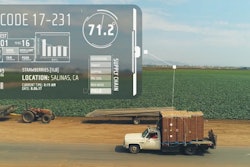
The food industry is unique and complex, having to operate and coordinate with diverse companies throughout the supply chain, all while ensuring that strict regulations are met. All business processes including inventory management and tracking must be performed under tight time constraints, and unlike other businesses, many have to deal with catch-weight. Enterprise resource planning (ERP) is the core business application that is best deployed as one shared database that supports all business functions used by the different business units. So what does that mean for those companies involved in the food industry?
A proper food industry ERP solution should streamline business processes from manufacturing to distribution to retail point-of-sale, which helps companies comply with food safety regulations and manage enterprise resources more efficiently. In the food industry, ERP is a necessary strategic business application and not merely a tactical tool. In the past, ERP functioned as a basic business management system that controlled manufacturing flow and scheduling inside the facility. Over time, these functions became automated within the system. Today and going forward, ERP is doing much more than that.
Mobility
Today, almost everyone has a mobile device, and the integration of mobility into the workplace is dramatically impacting enterprise technology. This is true for ERP systems, where modern, up-to-date solutions now have applications that can turn ordinary smartphones into powerful business tools that communicate directly with the ERP system. One of the greatest advantages of mobility for food manufacturers and distributors is that it enables ERP functions and data to be extended outside of the manufacturing facility, supporting transportation, distribution and retail out in the field.
In the past, ERP systems were limited to within the four walls of the enterprise it supported. Now, modern IT systems and mobile applications are able to extend outside the confines of a facility so that other critical processes can be streamlined through the ERP system.
The logistics side of business is one that greatly benefits from mobility. By having access to an ERP system anywhere, anytime, distribution can be more transparent, accurate, auditable and traceable. In the past, when a delivery arrived to its final destination, the carrier would only be able to alert the customer and manufacturer once the entire delivery route was completed, at which point the carrier was able to access the system via a computer. Now, mobile applications connected to ERP systems allow carriers to scan deliveries when they are dropped off, send real-time alerts to the customer and manufacturer and even take a picture to confirm proof-of-delivery.
Another ERP mobility strategy is to automate on-the-go route sales. Production demand and fast delivery expectations put a lot of pressure on manufacturers and distributors. By automating route sales, the distribution process from sales order processing to truck loading to delivery is updated in real-time. Food companies can confirm truck loading, track status via GPS, process orders, confirm delivery, collect payments, print or email delivery receipt and invoice and perform truck settlement anytime, anywhere.
Having access to this real-time information on-the-go allows manufacturers to easily trace product from the shop floor to the customer’s hands, making it easier to remain transparent and accurate in order processing and delivery. This is especially important in the food industry, where food safety is required. If there is a suspected contamination or questionable product, being able to easily track and trace products is crucial to minimizing any safety hazards.
Analytics
ERP systems can generate an extensive amount of data. And because they are often linked through many different departments in a company, the data coming from these systems is not only extensive, but incredibly valuable. By using analytics, companies can gain insight on trends, plant efficiency, quality control, point of sale and more. This data can be used for both low-level monitoring that focuses on departmental metrics, such as inventory turns, customer fill rates, forecasted demand versus actual demand and vendor performance, and high-level monitoring such as overall performance of the enterprise.
With analytics, ERP applications can go above and beyond inventory forecasting and suggested purchasing by utilizing predictive analytics, a crucial part of budget planning. Analytics tools pull data from past sales and are able to intelligently predict future performance, which can then be used to assess demand levels and purchase inventory as necessary. Predictions are impeccably accurate, thanks to the data algorithms and formulas built into the ERP application. Suggested purchasing applications ensure that businesses reduce inventory and increase sales by forecasting inventory and automating the buying process based on tracked supply and demand for an item.
To get the most out of an ERP solution, it’s beneficial to deploy a system that has embedded analytics. In the past, companies would send ERP data to a third party to be analyzed, which is both costly and inefficient because data would have to be replicated continuously in order for analytic insights to be kept up to date. An ERP system with embedded analytics enables companies to instantaneously create powerful reports and dashboards that allow them to easily identify and analyze opportunities and trends and monitor performance against targets.
Because the tools are at the disposal of the company, reports can be created daily to closely monitor goals and performance.
Visibility and Agility
In the food industry, companies must act in a timely manner regarding FDA regulations and food safety. If a system doesn’t quickly react to changes in regulations—or easily track vendor information, food quality, safety, refrigeration, etc.—they can find themselves falling behind competitors, losing customer confidence and potentially have compliance issues with the government.
Product recalls are unfortunate, but not uncommon in the food industry. It’s crucial that companies are able to track not only the final product they produce, but also all the ingredients that go into making it. To do this, data from every touch point in the supply chain has to be noted and recorded accurately. ERP systems make it easy to record and store all of this data, as well as access it any time should an issue arise, minimizing response time. Being quick to notify customers, partners and the FDA of any issues is key to maintaining respect and trust.
Visibility is so important for companies in the food industry, especially in an increasingly globalized food supply chain, that some businesses seek ERP solutions solely for its end-to-end food safety capability. Despite complicated supply chains, it’s surprising that many food manufacturers still rely on paper records, spreadsheets or a mix of automated systems to monitor food production.
Improvements in Implementation
As ERP tools have evolved, so has its implementation. In the past, when ERP was used more tactically, implementation was casual and less planned out. Companies assumed that implementation would be easy, and therefore not a lot of strategy went into deployment.
Today, there are more interfaces and applications to consider. It’s crucial that ERP is implemented more strategically than in the past and with a strong project plan and project management team. These tactics improve overall functionality and ensure implementation is smooth. While it may seem daunting, most modern, up-to-date ERP providers have their portion of an implementation project plan well documented and regimented and will work with specific needs of the company.
When a company invests in a new ERP system, implementation is generally kicked off by a series of meetings to build on the vendor’s project plan, personalize the system to the specific needs of the business and to assign project tasks to different people within the company. Next comes software training, followed by reviewing different deployment models and finally choosing the deployment method that works best for the company. This streamlined process that nearly every company follows ensures that all needs are met and the right amount of support is supplied, making for a smooth implementation despite a more robust ERP system.
Another consideration is that forward thinking companies, or those with modernized systems, are better suited to adapt to digital transformation, making ERP implementation smoother.
Companies that prioritize digital transformation as part of the project plan also gain the benefit of a modern IT. For the modern ERP system, much of the implementation can be automated, for example prepackaged virtualized machines that are able to transform from the ERP solution provider to the company’s system, which makes integration fast and easy.
ERP solutions can provide many overall business benefits specific to the food industry. Aside from making it possible to manage operations from anywhere at any time, an integrated ERP solution can also make processes more efficient and accurate by forecasting and planning inventory, production and logistics. Having total visibility into the supply chain is a necessity in the food industry, and its benefits can be invaluable.
With digital transformation top of mind for many businesses, now is the perfect time to re-evaluate how to strategically use or invest in an ERP solution to make the most of its business benefits.




















